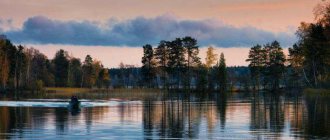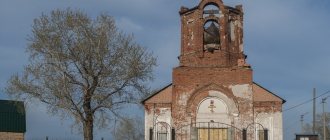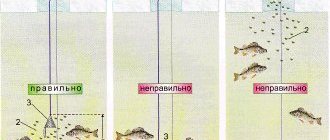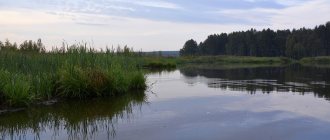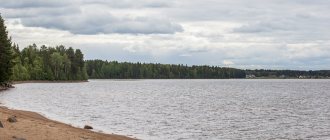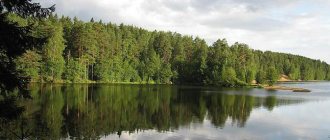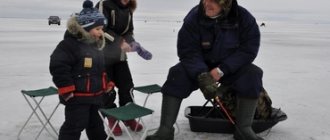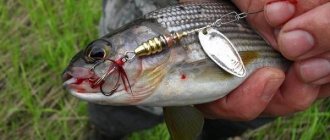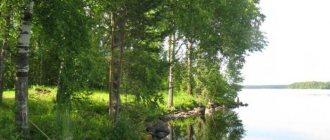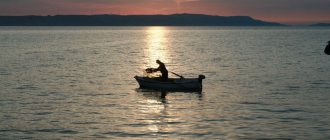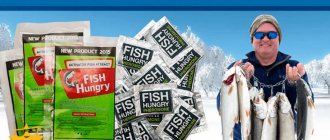Lake Middle Kuyto. Fishing and recreation
In the Kem River basin, in northern Karelia, there are three Kuito lakes: Upper, Middle and Lower. The largest of them is Sredneye, which occupies an area of 275, and according to some sources - 257 km 2, stretching in a south-easterly direction for almost 42 kilometers with a maximum width of about 12. The lake makes a strong impression on visitors thanks to its endless expanses, waves, being driven ashore, seagulls circling over the surface of the lake, and plenty of exciting fishing.
The mirror level exceeds the sea level by almost 100 meters. From the north the shores are high and rocky, and from the south they are low and swampy, with sedge and reeds in the coastal strip. Underwater, the bays are overgrown with urut, pondweed and hornwort. Around the lake there are endless coniferous forests. The coastline is winding and hides small bays and bays.
The bottom has an uneven topography, with numerous ridges, mudholes and rocks. In many places it is covered with stones with lacustrine ore coming out, which gives the water a brownish tint. The ore-bearing areas of the bottom give way to silty ones, and near Lusalma - sandy-silty ones. The water in the lake is quite clear; in winter you can see what is happening below at a distance of about five meters, and in summer - three. The depth of the Middle Kuito reaches 34, and the average water thickness is 10.8 meters. Spring floods raise the water level by about a meter.
In summer, the lake warms up to twenty or even more degrees, remaining cold at the bottom, about ten. Water freezes in the middle or end of autumn, and is freed from ice in late spring or early summer.
The Middle Kuito is fed from the Upper Kuyto, the Kenta and Ukhta rivers, streams and Alozero through the Enonshuu Strait, and gives water to the Lower Kuyto thanks to the Lusalma Strait connecting them.
There are 39 islands scattered across the surface of the lake, which occupy more than 17 km 2 . The largest, Kyläniemisuari, has an area of more than 6 km2 , followed by Urnashari, Toinen-Uhutsari, Purnusuari and Kormushsari. To the north of the lake lies the village of Kalevala, and to the northeast is Kuusiniemi.
Middle Kuyto is navigable; fishing vessels and cruise boats used to sail along it, but now water transport is left to timber industry enterprises, tourist centers, private individuals, foresters and fishery inspectors.
Nature of three lakes
Kuito lakes are interesting not only for fishing; during the short summer season people come here to wander through the forests with a tent, relax in nature in one of the cottages, and ride in jeeps. At the beginning of autumn, lovers of hiking for mushrooms and lingonberries come together; there are especially many berries on the islands of each of the lakes.
Upper Kuyto
The area of this lake is 198 square meters. km, and the maximum depth is 44 m. Of the three reservoirs, it has the most bizarre shape - in the form of a trefoil. Numerous islands also give the landscape an unusual appearance. In total, there are about 180 islets, of which the largest are called Pertisuari and Kalmosuari.
Despite its decent depth, Upper Kuito cannot boast of very clear water. You can only count on good visibility within 2.5 m. Many fishermen like this because the fish here are not so shy and cautious. Another advantage of this lake in terms of fishing is its uneven shores with a huge number of bays and bays. On all sides, Upper Kuyto is fed by numerous rivers and streams. Of these, there are 4 largest: Pistajoki, Tolljoki, Voinitsa and Kurzma. At the same time, seasonal water fluctuations are small - up to a maximum of 1 m.
© SK
The most accessible for tourists and fishermen are the northern and western parts of the lake, along which the Kalevala-Kostomushka highway runs. The southern coast is also popular, but the eastern shores are not easy to get to; there are several forest roads leading there, but their condition does not allow access by an ordinary passenger car. These are places for lovers of jeeping and hiking. Anyone who does not feel a craving for extreme recreation stops in the villages of Voknavolok, Pirttiguba, Voinitsa and Yuvalaksha.
To relax on Upper Kuyto you need to get a pass, since the lake is located in the border zone. You can apply for a permit through the State Services portal.
Middle Kuito
The largest and most popular lake in the Kuito system has an area of 275 square meters. km, and is up to 34 m deep. On its northern shore is the village of Kalevala - the very place where most tourists stop. Here you can stay in one of three hotels: “VelT”, “Sampo” or “On Sadovaya”. The large VelT tourist center, in addition to accommodation, offers fishing tours, and in winter - snowmobile trips and other recreation programs.
Islands, © Nadezhda Zubakova
In the warm season, many come to Middle Kuyto not only for fishing, but also simply to relax. In some places the lake resembles the cold northern sea, and the cries of seagulls, the rush of waves, and sometimes even real storms enhance this impression. It is not surprising, because in its widest part it is 11.7 km, and it is practically impossible to see the other from one bank.
The coast of the reservoir is full of variety - there are both gently sloping sandy beaches and harsh rocky shores. The water surface itself is strewn with islands. The three largest ones - Kylaniemisuari, Toinen-Uhutsari and Urnasari - are where many people go to pick mushrooms and berries.
Lower Kuyto
Lower lake with an area of 141 sq. km and a depth of up to 33 m is considered the smallest of the triad. Unlike its counterparts, it has a flatter coastline, although there is a large cape in the east. Closer to highway 86K-4, where the reservoir breaks into many small streams and lakes, the Kem River flows into it.
Lower Kuyto in winter, © Mar.kostina2012
Almost the entire coast of Lower Kuyto is deserted and dense pine forests. Only at the Luusalmi Strait, which connects this lake with the Middle Lake, is the village of the same name located - a popular holiday destination. In addition, tourists often stop at the eastern edge near Route 86K-4, where there are a couple of guest houses. Otherwise, the surroundings of the reservoir are suitable only for those who like to be alone with nature.
In the area of Lower and Upper Kuyto, mobile communications are lost in places. There are long sections on the highways without gas stations, and at the approaches to reservoirs, the asphalt can be replaced by a dirt road.
Rest on Lake Sredneye Kuyto
Despite the distance from big cities and the harsh climate, fishermen and tourists go to Middle Kuyto because the road here does not require extra effort and is inexpensive. By car, driving along the M18 highway and turning left to Kem along the A135 road, you can get to the village of Kalevala. Those who are going fishing without a car take the train in the direction of Murmansk to the Kem station, from where there are regular buses to Kalevala.
At the entrance to the village, tourists are greeted by a two-meter sculptural group with the name “Runes of Kalevala”, reflecting the distant past of these places described in the Finnish epic. The complex consists of a boat with a broken side and a wooden musical instrument, a kantele, such as a gusli. According to legend, Väinemäinen, the wise old man from the epic Kalevala, sailed on such a boat, and in the dense forests the petrified giant Vipunen forever preserved the secret of the words that stop the storm and defeat evil.
Those who come to the lake will definitely be offered to visit the picturesque islands of Toinen-Uhutsari, Urnashari, Cape Sieniniemi, Kumo and Kivakkakoski waterfalls, and Mount Kivakka. Local recreation centers and hotels offer tourists a variety of leisure activities, for which they organize the rental of fishing equipment, boats, catamarans, bicycles, sleighs, skis and snowmobiles. In summer, vacationers can go windsurfing, ride behind a boat on water skis or wakeboards.
Ethnographic excursions to local settlements are organized for visitors, in which guests are introduced to the life and cuisine of North Karelians. Museums await the curious in Kalevala: “Runoptsev” and the local history museum.
Walks on the lake are carried out in canoes, rowing and motor boats and motorboats. During the walk, tourists will visit the most beautiful islands, sit by the fire, and taste fish delicacies. Fishermen can go fishing on a speedboat with an instructor who will show the most fishing spots and teach fishing techniques.
Fishing on Lake Sredneye Kuyto
Kayakers and fishermen love to come to the lake, rich in rapids and fish. The lake pleases them with salmon, whitefish, vendace, grayling, pike, smelt, roach, dace, ide, ruff and perch.
Vendace is small, on average 10 centimeters in length. The next most common catch is roach, which lives in all areas of the lake. It averages 23 centimeters in length, weighs about 170 grams, and spawns in late spring or early summer.
Not a single fisherman leaves the lake without a pike, the average weight of which is slightly more than a kilogram with a length of about 60 centimeters and which goes to spawn in small neighboring lakes. There are also enough perches with an average weight of 500 grams for everyone. It comes closer to the shore to spawn in early summer. Whitefish are caught on average up to half a kilogram. Perch, roach and pike are caught better in the spring, during spawning. The average weight of roach exceeds 500 grams. Burbot comes across from half to one and a half kilograms.
In summer, salmon are caught mainly on the track. Individuals of 4 kilograms in the catch are not considered prohibitive. Grayling bites less frequently, but in local rivers you can catch both grayling and trout. A worm, bloodworm or maggot is attached to the hook of a spinning rod using a spoon or float rod. Rotating copper-nickel silver spoons with a fly attached are good for catching perch, whitefish and pike. Grayling is caught on the rapids of the river between the Middle and Upper Kuyto using a spinning fly fishing rod, floating a fly along the stream from a boat standing above the rapids. Ide is sometimes caught on spoons.
What kind of fish can you catch in Karelia?
Ide
| Permitted gear | Feeder, float and bottom tackle, spinning rod |
| Bait | Worm, bark beetle larva, caddis fly, fly, maggot, dragonfly larva, young frogs |
| Allowable catch weight | 5 kg |
Ide can grow up to two kilograms. Photo: globallookpress.com
Ide is a unique fish in many ways. It is distinguished from most other representatives of the underwater kingdom by its intelligence and increased caution. Therefore, it is not easy to catch it: just one mistake on the part of the fisherman is enough, and the timid ide will literally lie to the bottom, from where it will no longer be possible to lure it out with even the most appetizing and tempting bait.
Ide is very attached to a specific place. There are practically no universal signs for identifying its location; each new body of water must be studied separately: read fishing forums, contact local residents.
Ide grows up to two kilograms, its meat is tasty. And just checking a box in the personal competition is worth a lot.
Bream
| Permitted gear | Feeder, donka, float rod |
| Bait | Worm, maggot, bloodworm, pearl barley, semolina, corn |
| Allowable catch weight | 5 kg |
Catching bream can be a real challenge for a fisherman. Photo: globallookpress.com
Bream can safely be called a fishing classic. This calm sedentary fish is found in abundance in almost all reservoirs of Russia and is capable of staying in the same holes at the bottom for years, which greatly simplifies its catching. Bream does not like fast water and prefers to live in areas with a silted bottom and nearby vegetation.
Sometimes catching bream can still become a real challenge for the fisherman. The fact is that its habitats are quite often filled with driftwood or boulders, so you can easily leave a couple of hooks there. Bream are usually caught not in the pits themselves, but on the slopes or exits from them.
There is no need to talk about the gastronomic advantages of this fish. Everyone knows that bream meat is tasty and moderately fatty, ideal for frying, drying, salting and other culinary manipulations.
Ruff
| Permitted gear | Feeder, donk, float, spinning rod |
| Bait | Dung worm, maggot, bloodworm |
| Allowable catch weight | Up to 10 kg |
The best period for catching ruffe is cool, stormy days. Photo: globallookpress.com
The ruffe is a small (usually up to 100 grams in weight), but very self-confident and aggressive fish. Its bite can easily be confused with the bite of a large predator - the same float, for example, sharply goes down, after which the ruff begins to fight in an attempt to drag it to the bottom. Many fishermen underestimate the ruffe and it’s completely wrong: the fish soup from this fish is simply amazing, in no way inferior in taste to salmon or trout fish soup.
True, if you do not hunt for it purposefully, the ruffe is quite capable of ruining fishing: it always stays in schools, so if it has already started to bite, rest assured that you will not catch anyone else in this place.
The best period for catching ruffe is cool, stormy days. This fish does not like direct sunlight, and the sound made by raindrops knocking on the water surface reminds it of the sound of insects falling from tree branches.
Dace
| Permitted gear | Feeder, donk, float, spinning rod |
| Bait | Caddisfly, grasshopper, dung worm, maggot |
| Allowable catch weight | Up to 5 kg |
The dace is very timid, it needs to be hooked with lightning speed. Photo: commons.wikimedia.org
Dace is a fish that has spoiled the nerves of more than one generation of fishermen. It's all about her extreme activity: she literally doesn't stand in one place for a second, constantly moves, scours back and forth in the water column. There are known cases when a dace that was already safely caught and pulled ashore slipped out of the hands of an unlucky fisherman, fell into the water and immediately sank into the depths.
This behavior of the fish requires the skill of the fisherman. Since the dace is very shy, it needs to be hooked with lightning speed, at the first sign of a bite. If you decide to “play” with the fishing line, the fish will get scared and leave, never returning to the suspicious bait. You shouldn’t stand on ceremony with it after hooking it either - drag it to the shore as soon as possible, otherwise the escaping fish will scare away all its relatives, and you’ll have to urgently change the fishing spot. A well-fed dace tends to take a worm or maggot by the very tip, thereby avoiding being hooked.
Types of fish that are found in this reservoir:
Lake Middle Kuito is located in Karelia in the Kalevalsky national region. It occupies a western middle position in the overall Kuito lake system.
The area of the entire water surface in the lake is 275.7 km2, and the area including the islands is 293.1 km2. The maximum length of the lake is 41.8 kilometers, and its width is 11.7 kilometers. In total, the lake has 39 islands with a total area of 17.4 km2. The coastline of Upper Kuito is slightly sinuous, its length is 165.6 kilometers, and the coastline of the islands is 51.3 kilometers. Above sea level, the height of Middle Kuyto is 101.3 meters.
This reservoir is elongated in shape with the major axis directed from the northwestern part to the southeastern part. The southern shores of this lake are low-lying, rocky, and largely swampy. The northern shores are higher and rocky in some places. The coast of Middle Kuyto is covered with coniferous forests with a predominance of pine trees.
In addition to precipitation, the Middle Kuito is also fed by the waters of lakes such as Kuito Verkhneye and the Kenty River. In addition, the Ukhta River and numerous streams that are of swamp origin flow into this lake. The average depth of the Middle Kuito is 10.8 meters, with a maximum depth of 34 meters in the center of the reservoir on the eastern side of the islands. If we talk about the bottom topography, in this case it is very uneven, with underwater rocks, lumps and ridges.
The color of the water in the reservoir varies from light yellow to light brown. Water transparency in winter is 4.7 meters, and in summer – up to 3 meters.
Aquatic higher vegetation in Middle Kuito in Karelia is concentrated mainly in the bays, which are located in its northwestern part, where, in addition to coastal thickets of reeds and sedges, various types of underwater vegetation are also common.
The bottom fauna here is represented mostly by small chironomid larvae, small mollusks and relict crustaceans. The benthos in the lake is very poorly developed. There are an average of 177 animals per square meter of bottom in summer.
Zooplankton are cladocerans and copepods. In summer, most forms of crustaceans can be found in large numbers, and in winter their numbers decrease significantly.
Lake Sredneye Kuito is home to fish such as salmon, vendace, whitefish, grayling, smelt, pike, roach, ide, dace, perch and ruff. When fishing on the lake, the catch consists mainly of vendace, pike, roach and perch.
Photo report about our fishing from Lake Verkhneye Kuyto!
Hello readers. I’ll start my story with the fact that fishing for me is not just a passion and a hobby, it is a state of mind. I have one very good friend and comrade, with whom I have known and been friends since 5-6 years, this is Alexander Borisov. I still remember when young freshmen (8-9 years old) rode bicycles near the city to go fishing.
On the river where we went there was a small creek. In the morning there was always 1 pike in it. When they arrived, they ran headlong into a race to see who could catch the first live bait and set a trap. Whoever is faster wins the pike) That’s how we still go fishing together, competing with each other to see who can catch the most)
Alexander once told me, why don’t you start your own project about fishing, since you love it so much? I didn’t have to think long, especially since I had little experience in creating websites.
Time goes by, people grow up. Everyone has their own families, children, worries. That’s why I can’t go fishing so often now. I had a couple of free weekends, I called Sanya and said: “Let’s go and unwind this weekend, my friend, otherwise your head will soon explode from the computer and the Internet.”
"OK!" - said Sanya. We thought for a long time where to go and chose Upper Kuito, Pongagaba Bay. I didn’t have to take the map with me, since I had been there more than once. Kuito is interesting because it is a group of three lakes (Upper, Middle and Lower). The lakes extend in an arc for 140 km. The lakes are inhabited by salmon, vendace, whitefish, grayling, European smelt, perch, roach, ide, pike, burbot, dace, and ruff.
We got up at 6 a.m., while we were getting ready, we left at about 7 a.m. (70 km to go). By the time we got there, we came to the lake, it was still dark and the nods weren’t really visible. 2 hours passed, and none of us saw the coveted bite. We decided to move to another bay (10 km from this one), called Melguba. And it wasn't particularly successful.
Caught pcs. 10 pinkie-sized ruffs, which were allowed to grow further, and a couple of small perches (pictured below).
Alexander found such fishing boring, he put down the fishing rod, saying let the fish catch itself and began to perform acrobatic elements)
A few more photos.
So that Sanya would not go crazy, we decided to retreat to a small lambina that we were passing. They definitely had to catch something there.
